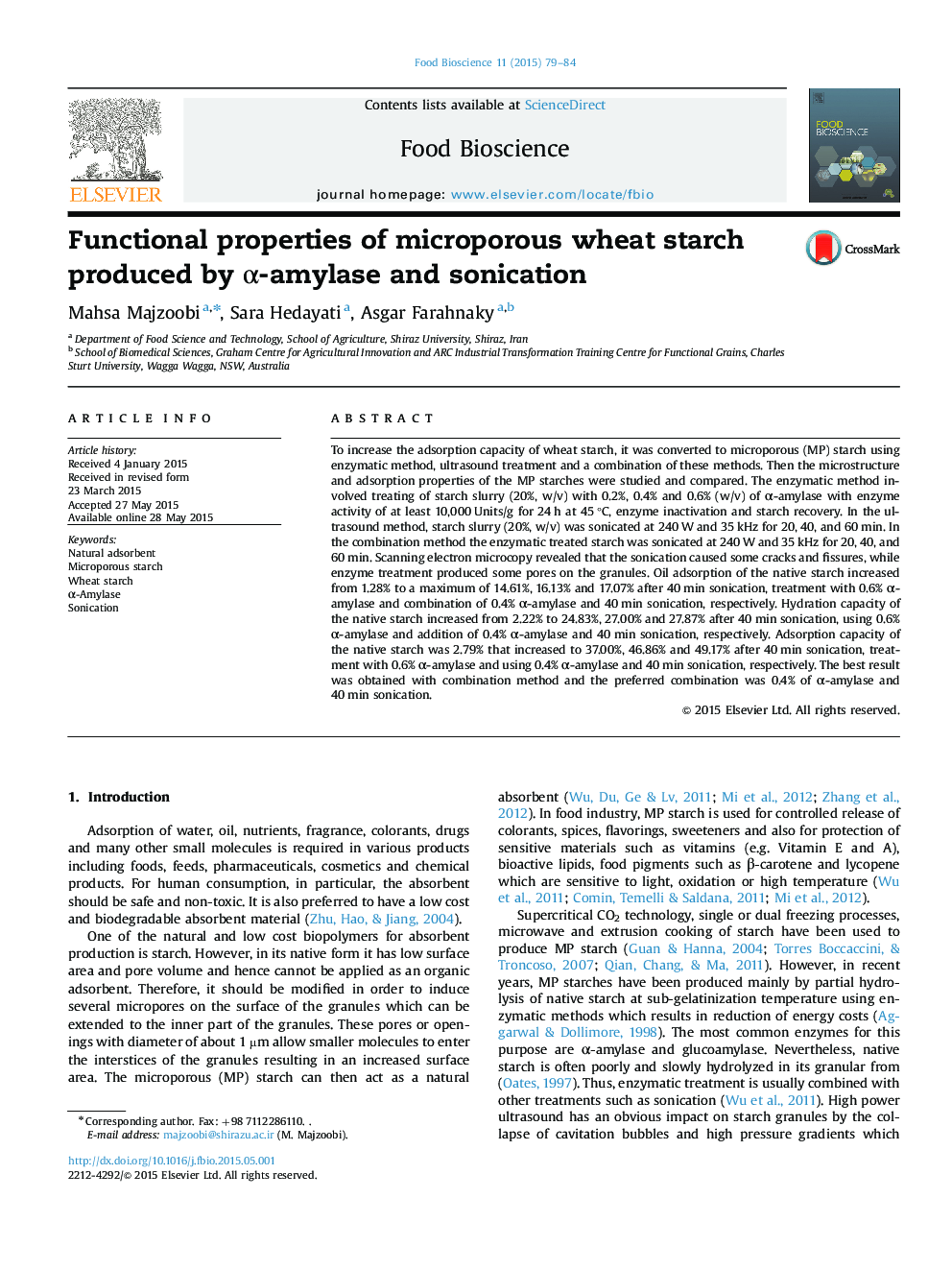| Article ID | Journal | Published Year | Pages | File Type |
|---|---|---|---|---|
| 19690 | Food Bioscience | 2015 | 6 Pages |
To increase the adsorption capacity of wheat starch, it was converted to microporous (MP) starch using enzymatic method, ultrasound treatment and a combination of these methods. Then the microstructure and adsorption properties of the MP starches were studied and compared. The enzymatic method involved treating of starch slurry (20%, w/v) with 0.2%, 0.4% and 0.6% (w/v) of α-amylase with enzyme activity of at least 10,000 Units/g for 24 h at 45 °C, enzyme inactivation and starch recovery. In the ultrasound method, starch slurry (20%, w/v) was sonicated at 240 W and 35 kHz for 20, 40, and 60 min. In the combination method the enzymatic treated starch was sonicated at 240 W and 35 kHz for 20, 40, and 60 min. Scanning electron microcopy revealed that the sonication caused some cracks and fissures, while enzyme treatment produced some pores on the granules. Oil adsorption of the native starch increased from 1.28% to a maximum of 14.61%, 16.13% and 17.07% after 40 min sonication, treatment with 0.6% α-amylase and combination of 0.4% α-amylase and 40 min sonication, respectively. Hydration capacity of the native starch increased from 2.22% to 24.83%, 27.00% and 27.87% after 40 min sonication, using 0.6% α-amylase and addition of 0.4% α-amylase and 40 min sonication, respectively. Adsorption capacity of the native starch was 2.79% that increased to 37.00%, 46.86% and 49.17% after 40 min sonication, treatment with 0.6% α-amylase and using 0.4% α-amylase and 40 min sonication, respectively. The best result was obtained with combination method and the preferred combination was 0.4% of α-amylase and 40 min sonication.
